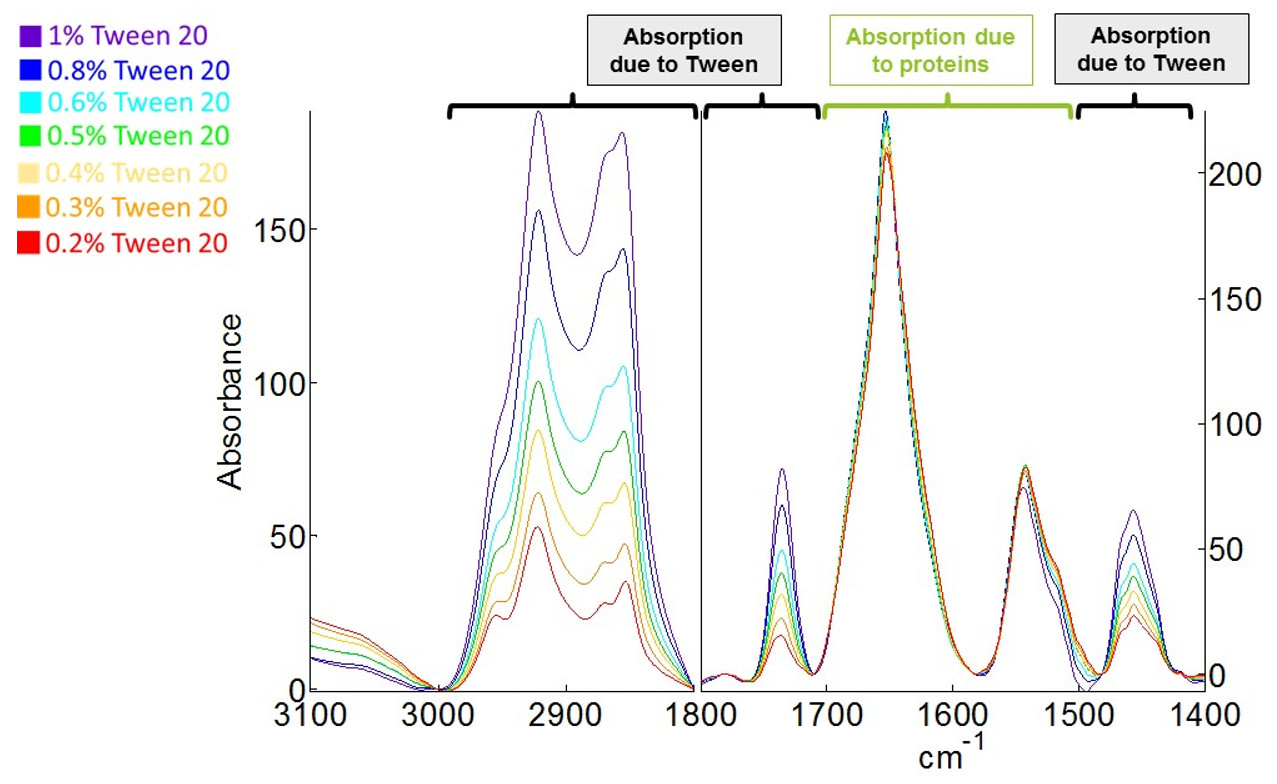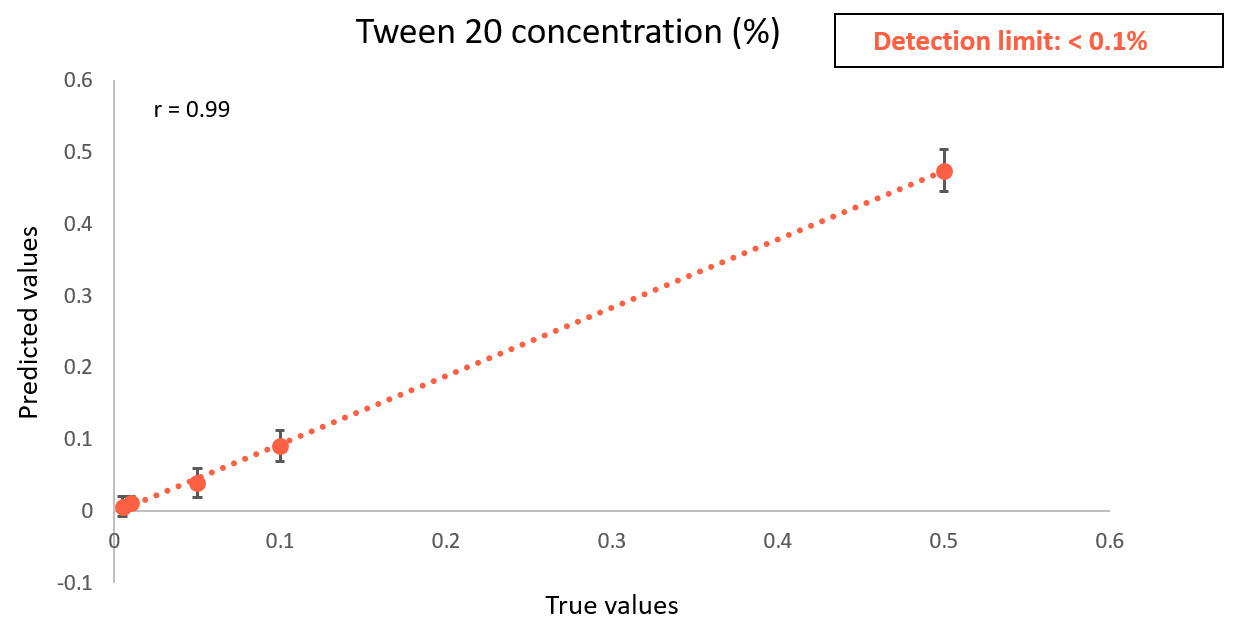Tween detection and quantification
Tween 20 and 80 are commonly used in biotherapeutic formulations due to their low toxicity and good biocompatibility. However, quantifying them still represents an analytical challenge.
We used our expertise in fourier-transform infrared (FTIR) spectroscopy, to develop a methodology to detect and quantify Tween in biopharmaceutical products.
The first figure shows a series of spectra of a therapeutic protein containing different levels of Tween 20. The spectral variations related to the increasing Tween concentrations can be clearly noticed on this figure.

FTIR spectra of a therapeutic protein containing various levels of Tween 20 (as indicated in the upper left corner). The intensity of the spectral bands related to the absorption of Tween (marked in black) increases with growing levels of Tween.
Furthermore, using multivariate statistics, we built a predictive model that allows to quantify this detergent even at concentrations lower than 0.1%. The second figure shows the validation of this model, i.e., the application of this model on independent samples: it reports the predicted Tween concentration as a function of the true concentration. The error bars indicate the standard deviation associated with this concentration. With a correlation coefficient of 0.99, the predicted values are highly correlated with the true values, underlining the performance of this model.

Validation of the model predicting Tween concentration using FTIR spectra of therapeutic protein samples. Predicted values are represented as a function of the true values. Each point corresponds to the mean of all the spectra recorded at one concentration. The error bars indicate the standard deviation.